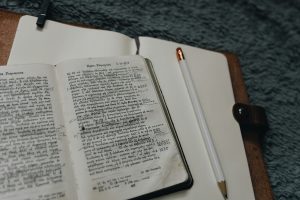Why Reading in a College Writing Textbook?
 This text is designed for a college writing course, so why talk about reading?
This text is designed for a college writing course, so why talk about reading?
Here’s the short answer: Reading and writing are integrally connected, and you will be doing a lot of both in college, probably at a more advanced level than in the past. You may also be expected to use texts in more sophisticated ways.
You’ve been reading for a long time, and you have lots of practice at it. Over many years of schooling, you have learned how to identify main ideas and an author’s purpose. You’ve summarized and quoted from poems and novels and essays. You’ve used background knowledge and made connections among ideas in different sources. You’ll use all of these skills at this level, too.
However, reading at the college level raises the bar. You’ll encounter essays and books with more complex ideas than you may have read in the past. You’ll be assigned research articles written for scholars and scientists that aren’t easily read by students or other novices. And you’ll be asked to read texts that you might not agree with or at least find uncomfortable.
The way you read in prior schooling may have served you well, but these more challenging texts will ask you to strengthen your existing reading skills and to develop new ones. The strategies in this section are designed to help you do that.
*Using* Texts
 In my short answer, I said that you will need to “use texts.” Let’s explore this idea a bit, beginning with “using.”
In my short answer, I said that you will need to “use texts.” Let’s explore this idea a bit, beginning with “using.”
College reading is not usually pleasure reading, though you may find some of it quite enjoyable. Most of the time, though, you will be reading specifically because you need to use the ideas or language in the service of your own work.
You will be doing many of the same tasks you have done in the past (e.g., identifying the main point, pulling together ideas from multiple sources), but when coupled with more difficult readings, these tasks can become more challenging, too. Moreover, in college, your professors are interested in your thinking. We want to understand what you understand, but simply regurgitating ideas from class or from texts aren’t going to be enough. We want to see what you can do with those ideas.
Using *Texts*
Traditionally, the word “text” has meant written material, usually in print form. Most people think of a text as a book or a magazine or other collection of words on a page or screen.
 In college, however, “text” has a bigger meaning. Many texts will still be traditional: books, articles, essays, stories, poems, and so on. But you will also have professors who ask you to treat movies, social media posts, architecture, music, fashion, and so many other things as texts.
In college, however, “text” has a bigger meaning. Many texts will still be traditional: books, articles, essays, stories, poems, and so on. But you will also have professors who ask you to treat movies, social media posts, architecture, music, fashion, and so many other things as texts.
When I use the word “text” here, I’m meaning any artifact of communication that can be shared with others. An artifact can be preserved in some way, including electronic formats, and for an artifact to be a “text,” it must also communicate something to someone.
For the purposes of this textbook, we’re going to focus on more traditional texts (with an emphasis on academic texts), but the strategies here can often be used with any kind of text.
Media Attribution
Woman Holding Book, Photo by No Revisions on Unsplash
White Pencil Beside Book, Photo by Kelly Sikkema on Unsplash
Desk, Photo by Humairah L. on Unsplash

